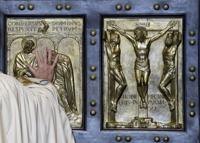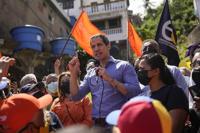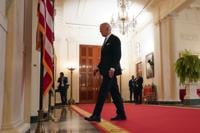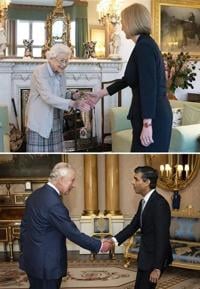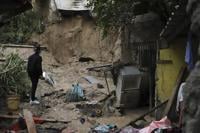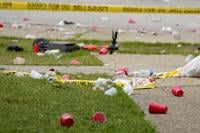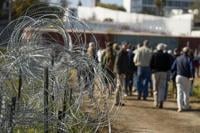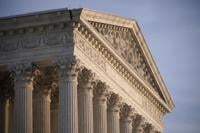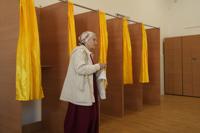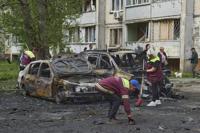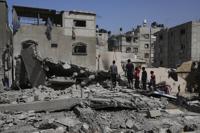VATICAN CITY (AP) — Pope Francis on Tuesday formally inaugurates the 2025 Holy Year, reviving an ancient church tradition encouraging the faithful to make pilgrimages to Rome, amid new security fears following a Christmas market attack in Germany.
At the start of Christmas Eve Mass, Francis will push open the Holy Door on St. Peter’s Basilica, which will stay open throughout the year to allow the projected to visit Rome to pass through.
The first Holy Year was called in 1300, and in recent times they are generally celebrated every 25 to 50 years. Pilgrims who participate can obtain “indulgences” — the centuries-old feature of the Catholic Church related to the forgiveness of sins that roughly amounts to a “get out of Purgatory free” card.
The last regular Jubilee was in 2000, when St. John Paul II ushered in the church’s third millennium. Francis declared a special Jubilee in and the next one planned is in 2033, to commemorate the anniversary of the crucifixion of Christ.
What are indulgences?
According to church teaching, Catholics who confess their sins are forgiven and therefore released from the eternal or spiritual punishment of damnation. An indulgence is designed to that may remain — the consequence of the wrongdoing that might disrupt the sinner’s relationships with others.
Martin Luther’s opposition to the church’s practice of selling indulgences inspired him to launch the Protestant Reformation in the 1500s. He was excommunicated, and the practice of buying and selling indulgences has been illegal since the 1562 Council of Trent. But the granting of them has continued and is an important element in Holy Year pilgrimages.
According to the norms issued for the 2025 Jubilee, Catholics can obtain an indulgence if they:
— Undertake a pious pilgrimage, participating in Masses and other sacraments, at any of the four papal basilicas in Rome or the Holy Land, or other sacred Jubilee sites “so as to manifest the great need for conversion and reconciliation.”
— Participate in works of charity, mercy or penance, such as visiting prisoners, sick people or elderly people or undertaking corporal works of mercy “to feed the hungry, give drink to the thirsty, clothe the naked, welcome the stranger, heal the sick, visit the imprisoned and bury the dead.”
— Abstain, in a spirit of penance, for at least one day of the week from “futile distractions,” such as social media, or from “superfluous consumption," such as fasting; or donating the proportionate sum to the poor or to help migrants.
Why the focus on prisoners?
Francis has long made a hallmark of his priestly vocation, and a Holy Year dedicated to a message of hope is no exception.
In fact, the only other Holy Door that Francis will personally open this year is located at the chapel of Rome’s Rebibbia prison, to draw attention to the need to give prisoners in particular hope of a better future.
The final big event of the Holy Year before it closes on Jan. 6, 2026, is the Jubilee of Prisoners on Dec. 14, 2025.
What’s on the calendar?
The Jubilee calendar is a compilation of official and unofficial Holy Year events that will test the stamina of Francis, who just turned 88 and went into the Christmas season with a cold that made it hard for him to catch his breath.
Every month has two, three or four official Jubilee events that Francis is expected to attend which are designated for particular categories of people: the armed forces, artists, priests, poor people, volunteers and teachers. Then there are the unofficial Jubilee events, in which individual dioceses and other groups have organized their own pilgrimages to Rome.
One item on the Jubilee’s unofficial calendar, Sept. 6, has made news because it has been organized by an Italian association, “La Tenda di Gionata” or “Jonathan’s Tent,” which is dedicated to in the Catholic Church.
What about security for so many people?
Rome Mayor Roberto Gualtieri has said the security plans call for a mix of traditional policing — a reported 700 extra officers — plus high-tech surveillance using drones and closed-circuit cameras that, thanks to algorithms informed by artificial intelligence, can keep track in real time of crowd sizes and congestion points.
“There will be more vehicles, more men, and very, very, shall we say, robust and important security devices,” Gualtieri told reporters last week.
The Vatican has tried to reduce congestion for pilgrims by allowing them to reserve their visits to St. Peter’s Basilica online in advance.
After a driver plowed into a , killing five people, Italian authorities last week sent a circular to police stations around the country recommending “maximum” investigative efforts and to immediately boost surveillance and police patrols around Christmas markets and displays and tourist attractions.
The Vatican, with its life-sized creche and giant Christmas tree in St. Peter’s Square and outdoor exhibit of nativity scenes in the Bernini colonnade ringing it, qualifies as an at-risk target.
How else is Rome preparing?
Rome has had for the Holy Year that involved major public works projects and artistic renovations that have coincided with separate initiatives paid for by the European Union’s COVID-19 recovery funds.
Fewer than a third of the 323 Jubilee projects have been finished or will wrap up by next month, meaning the traffic headaches and eyesores will continue well into 2025 and even 2026. But Romans and visitors are beginning to see some of the finished products.
Bernini’s fountains in Piazza Navona are glistening white again after a monthslong cleaning. A spiffed-up Trevi Fountain reopened over the weekend, and on Monday the main Jubilee project was unveiled: A pedestrian piazza linking Castel St. Angelo to the Via della Conciliazione, the main boulevard leading to St. Peter’s Square.
___
Associated Press religion coverage receives support through the AP’s with The Conversation US, with funding from Lilly Endowment Inc. The AP is solely responsible for this content.


